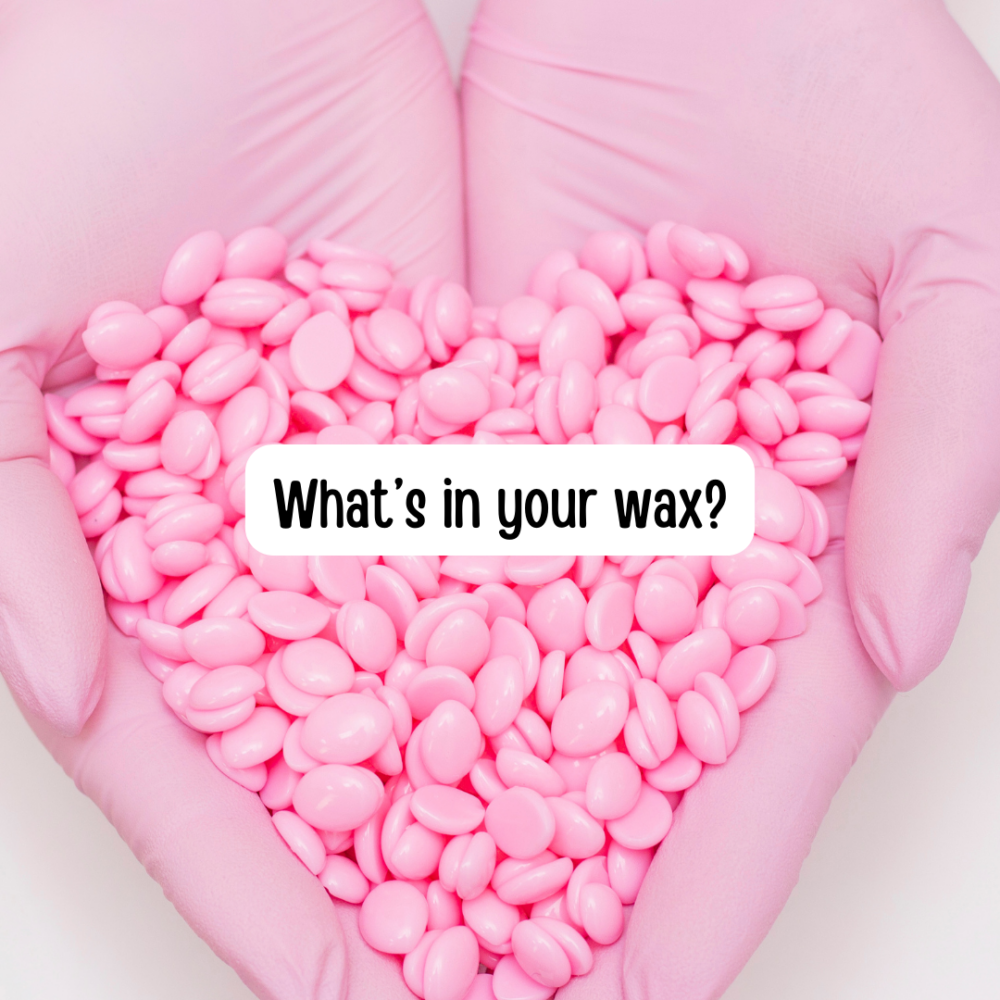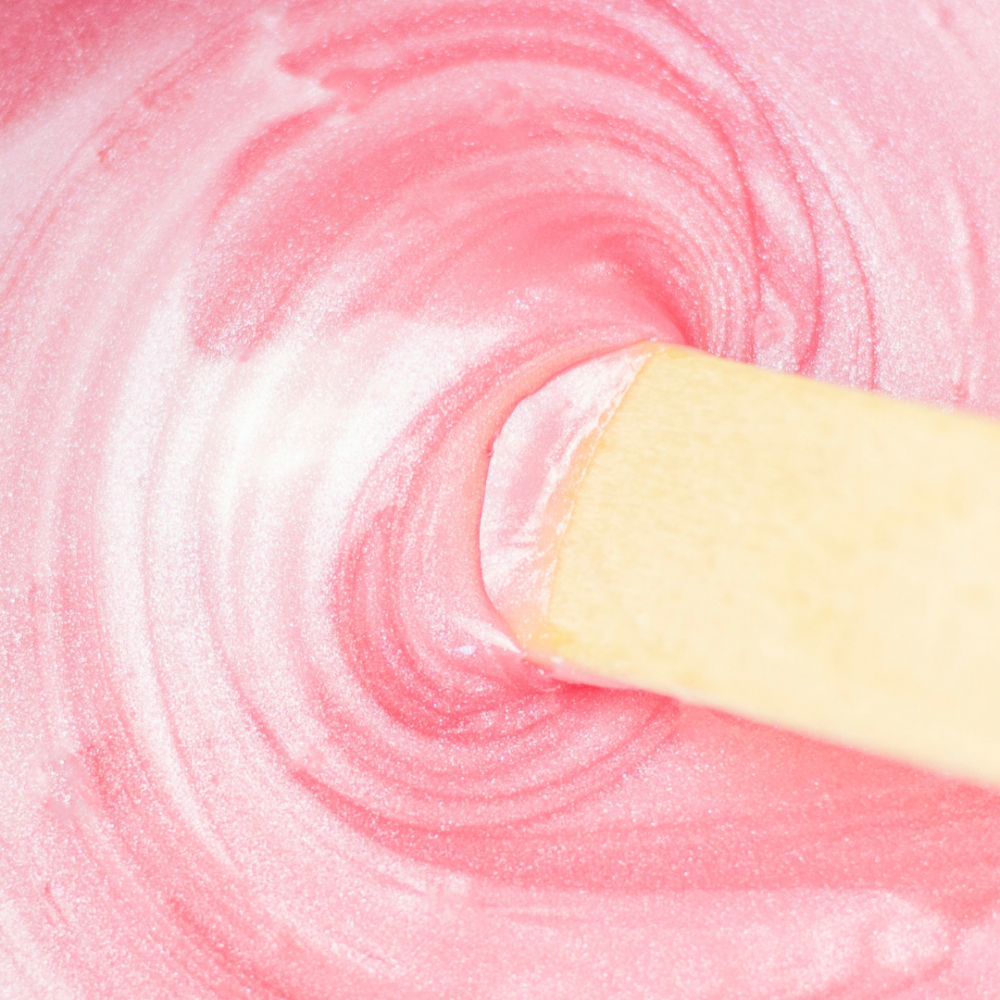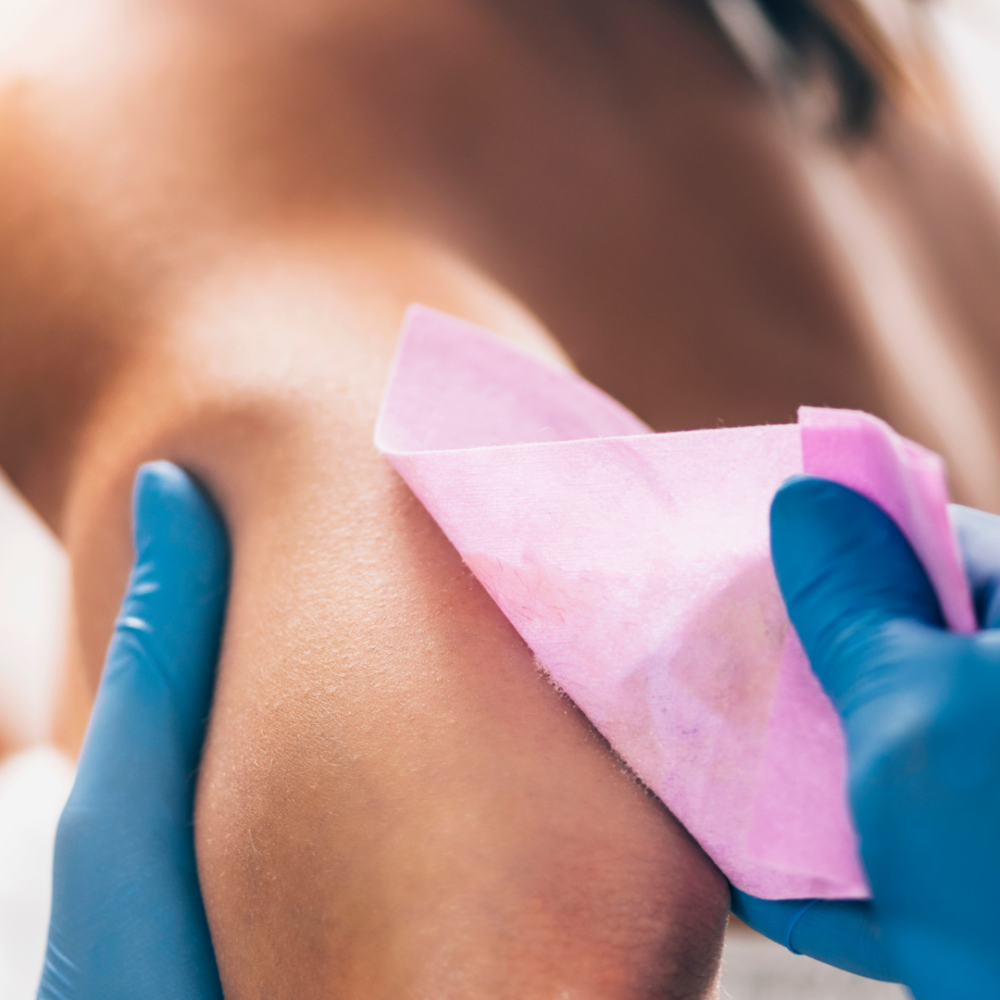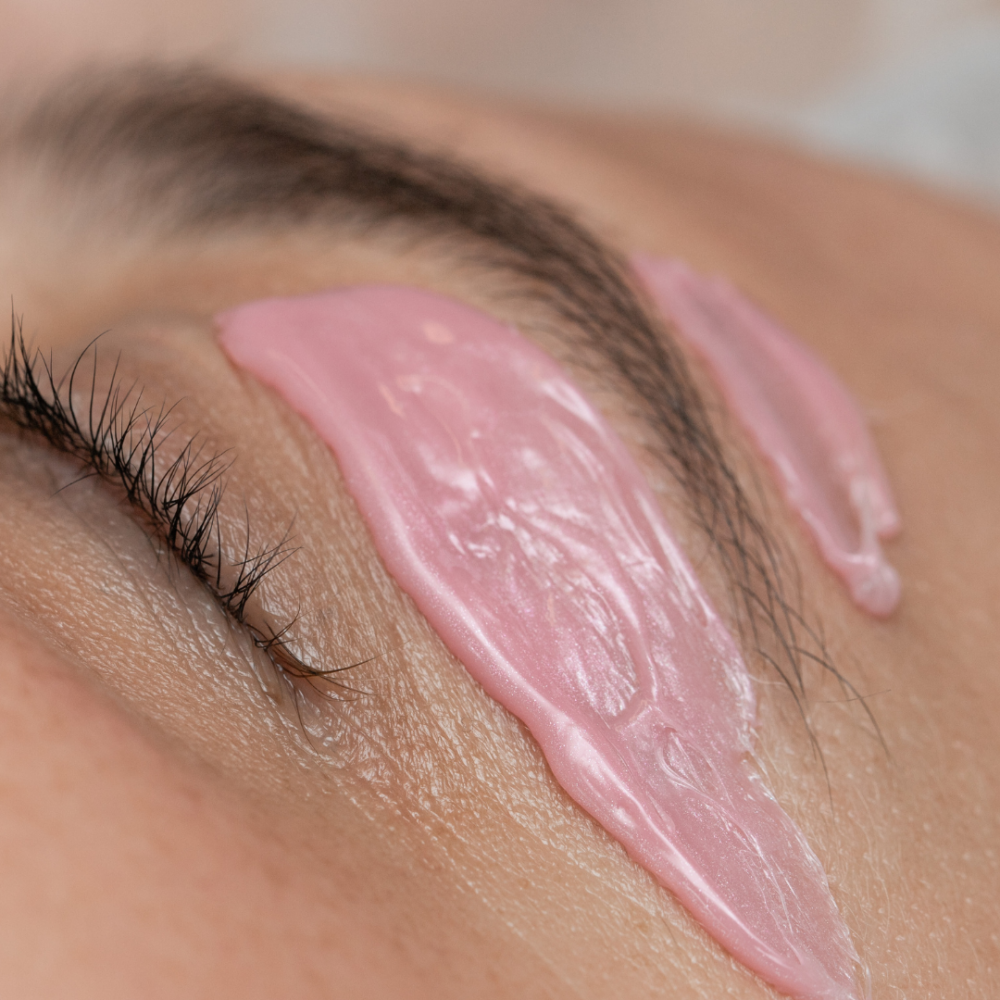What are the best professional depilatory wax ingredients
I’m a wax junkie.
I’ve been a professional waxer for over 12 years, during which time I have had the pleasure of trying out dozens of wax types from multiple companies.
My entire business is waxing, so I order a lot of it. I also get many samples sent to me from waxing companies who want me to try their wax (and hopefully buy a ton of it).
During the pandemic, I started doing more in-depth research on wax. I wanted to find the differences between product lines and what makes each type work. I also wanted to know what the best professional depilatory wax ingredients are and what each ingredient does.
Types of wax
»Professional hard wax«
Hard wax, aka film wax or stripless wax -is a low-temperature wax that hardens on the surface and is “peeled off.” It is usually used on thick, coarse hair in small areas. Various new film waxes can now be used on large areas, such as legs.
»Professional soft wax«
Soft wax, also known as strip wax or hot wax- is a thin wax applied to the area, and a paper or muslin strip is pressed over the top and pulled off. It is usually used in speed waxing or large areas.
How do depilatory waxes work to remove hair?
“Hair-binding agents provide stickiness and enable the wax to “catch” the hair follicles. Rosin is one of the examples of hair binding agent. Rosins are hard and translucent components derived from pine trees, such as wood rosin, gum rosin, dimerized rosin, and esters of rosins. Another example is rosinates; these are glyceryl monoesters made of glycerin and rosins. They contribute to the adhesion of waxes. Such as methyl hydrogenated rosinate, glyceryl hydrogenated rosinate, polyethylene glycol hydrogenated rosinate, and triethylene glycol rosinate. Skin conditioning and skin protective agents protect the skin from damage during the waxing process as well as modify the melting point of the rosins and rosinates and make them more flexible.” Reference http://epgp.inflibnet.ac.in/epgpdata/uploads/epgp_content/S000833PL/P001869/M031294/ET/1527678323P11M32Text.pdf
( this is a direct quote from a paper. (don’t judge me on the grammar, lol)
Soft and hard body wax ingredients
Standard depilatory body waxes may consist of a wax such as beeswax and a sticky, polymeric resin. The wax provides the setting action needed for peeling the product off the skin, and the resin helps bind the material to the hair.
So, what are the most common depilatory wax ingredients?
These are the main ingredients in body wax (both soft and hard). The quality of ingredients plays a big part in how effective the wax is.
Better quality ingredients mean more expensive wax, but it does a better job of getting the results.
On a product label, the ingredients are listed in order of predominance. The ingredients used in the greatest amount are first followed in descending order by those in smaller amounts.
The sticky stuff (In no particular order)
•Rosin (Colophonium, Colophony, Methyl abietate alcohol, Abietic acid, Rosin Gum, Hydrogenated Glycerol Esters)
This is the most widely used ingredient in body waxing products.
The rosin gives wax its tackiness. There are many types of rosin.
Rosin is the term collectively used for the solidified, distilled form of resins from pines, cedars, spruce, firs and junipers.
It is commonly found in sutures, tape, dentistry products, namely sealants and topical medications in western medicine.
•Glyceryl Rosinate AKA- glyceryl, glyceryl monoester
It is often one of the primary ingredients in waxes due to its excellent adhesivity.
This is the purest derivative of natural rosin and is non-allergenic. Most are also made from fatty acids or fatty acid derivatives. Some of these fatty acids may come from refined vegetable oils.
Primarily used in the formulation of creams and lotions, moisturizers, and other skincare products, but glyceryl monoesters can also be found in permanent waves, deodorants, bath soaps, eye makeup and foundations.
Reference: https://europepmc.org/article/pat/ep1245220
•Resin
The difference between Rosin and Resin is that rosin is an organic substance, and resin is a solid or highly viscous substance of plant or synthetic origin.
•Polycyclopentadiene hydrogenate
It is a synthetic resin used depilatory waxes because of its excellent ability to form a film and adhesion. It can also be used in makeup (mascara, highlighters, etc.).
Other major ingredients:
Cosmetic waxes/oils: beeswax, jojoba oil, paraffin wax and silicone wax, lanolin wax
They offer skin conditioning and skin protective agents to protect the skin from damage during the waxing process. They modify the melting point of the rosins and rosinates and make them more flexible. Oils are added in waxes to give plasticity and improve the heating process.
~~~~
Common examples found in body wax:
•Beeswax (Cera Alba)
It acts as an emulsifier to prevent separation of the ingredients and also as an emollient adding soothing and softening properties.
~~~~
Microcrystalline wax ( Cera microcrystalline )
Microcrystalline is a wax derived from petroleum. It’s used as a thickener and to give products a semi-solid to a solid smooth texture. It is used as an additive in wax blends to increase opacity, hardness and flexibility. It is also quite sticky. Microcrystalline wax is generally darker, more viscous, denser, tackier and more elastic than paraffin waxes. It is essential for speed waxers.
Reference: Blendedwaxes.com
~~~~
Synthetic beeswax
Synthetic beeswax is a blend of fatty esters, fatty acids, fatty alcohols, and high molecular weight hydrocarbons. The properties of Synthetic Beeswax resemble beeswax.
Reference: https://cosmeticsinfo.org/ingredient/synthetic-beeswax
~~~~
Candelilla wax
Candelilla wax is a natural vegetable wax derived from the leaves of the small Candelilla plant. It often substitutes for beeswax. It works as a thickening and hardening agent.
Reference: https://blog.publicgoods.com/candelilla-wax-guide-difference-beeswax/
~~~~
Paraffin wax (petroleum wax)
Paraffin Wax is derived from petroleum and is used in personal care products to smooth and soften the skin. Not as flexible as microcrystalline.
Reference: https://aromaticingredients.com.au/blogs/news/wax-used-in-cosmetic-and-personal-care-applications
~~~~
Glycerin (glycerine, glycerol)
Keeps skin moisturized and protected.
~~~~
Hydrogenated Styrene/Methylstyrene/Indene Copolymer, Ethylene/ VA copolymer
It is a chemical that is Film-forming, Viscosity controlling. (it help to thicken up products)
~~~~
Mineral oil (Paraffinum liquidium, paraffinum perliquidum)
It is used as a lubricant. Mineral oil is a clear, odourless liquid. It is made from highly refined, purified and processed petroleum. The type of highly refined and purified mineral oil found in cosmetic and skincare products is non-comedogenic (does not clog pores).
~~~~
Coconut Oil- (Cocos nucifera, Hydrogenated Coconut Oil, Pentaerythrityl Cocoate)
Coconut oils are used to make the wax softer and also as a skin protectant.
Hydrogenated Poly– used as a skin-softening agent and emollient
Common body wax additives:
There are a variety of minor ingredients in hard and soft waxes that will provide some benefits to the products and the customers.Titanium dioxide is used as a pigment, sunscreen and a thickener.
Zinc is a mineral that helps protect and soothe the skin.
Mica (muscovite) is a naturally occurring mineral dust often used in makeup foundations, as filler in cement and asphalt, and as insulation material in electric cables. Mica minerals are commonly used as colour additives in cosmetics. They also have reflective properties, allowing for a shimmery effect in mineral foundations.
Reference: Safecosmetics.org https://www.safecosmetics.org/get-the-facts/chemicals-of-concern/mica/
Guaiazulene ( azuline natural blue colouring) is very much a non-irritating ingredient that is well tolerated even on even hypersensitive skin when used as a colouring agent. It can be distilled from chamomile, yarrow and blue tansy.
Lanolin comes from the wool of sheep. It is used to blend ingredients but also has an adhesive quality to it.
Triethanolamine is used in many cosmetic products to help balance pH levels.
Ethylhexyl palmitate is a mixture of fatty alcohol and palmitic acid that functions as an emollient.
Silica– thickening agent in cosmetics
Dipropylene Glycol Dibenzoate– an emollient
Aluminum Hydroxide– functions as an opacifying agent and a skin protectant
Gossypium Herbaceum (Cotton) Seed Extract
Jasminum Of_cinale (Jasmine) Flower Extract
Lavandula Angustifolia (Lavender) Oil
Aloe Barbadensis Leaf Extract
Glycine Soja (Soybean) Oil
Hydrogenated Cetyl Olive Esters
Carthamus Tinctorius (Safflower) Seed Oil
Piper Methysticum Root Extract
Eugenia Caryophyllus (Clove) Leaf Oil
Salix Alba (Willow) Bark Extract
Charcoal Powder
Castor (Communis Ricinus) Seed Oil
Elaeis Guineensis (Palm) Oil
So, which is the best hard wax and soft wax?
Everyone likes a different type of wax. It depends on your training, the waxing you are doing, and the technique. If you have a niche market, such as Vegan, natural ingredients, or hypoallergenic, it will help you choose the best product for you.
Other things to consider are the humidity or temperature in your service room and what is available in your country.
By familiarizing yourself with wax’s main ingredients, you should have an easier time choosing the best wax. Don’t forget to contact the manufacturer if you have questions about a wax line.
If you want more waxing supplies, Check out THIS blog post.









